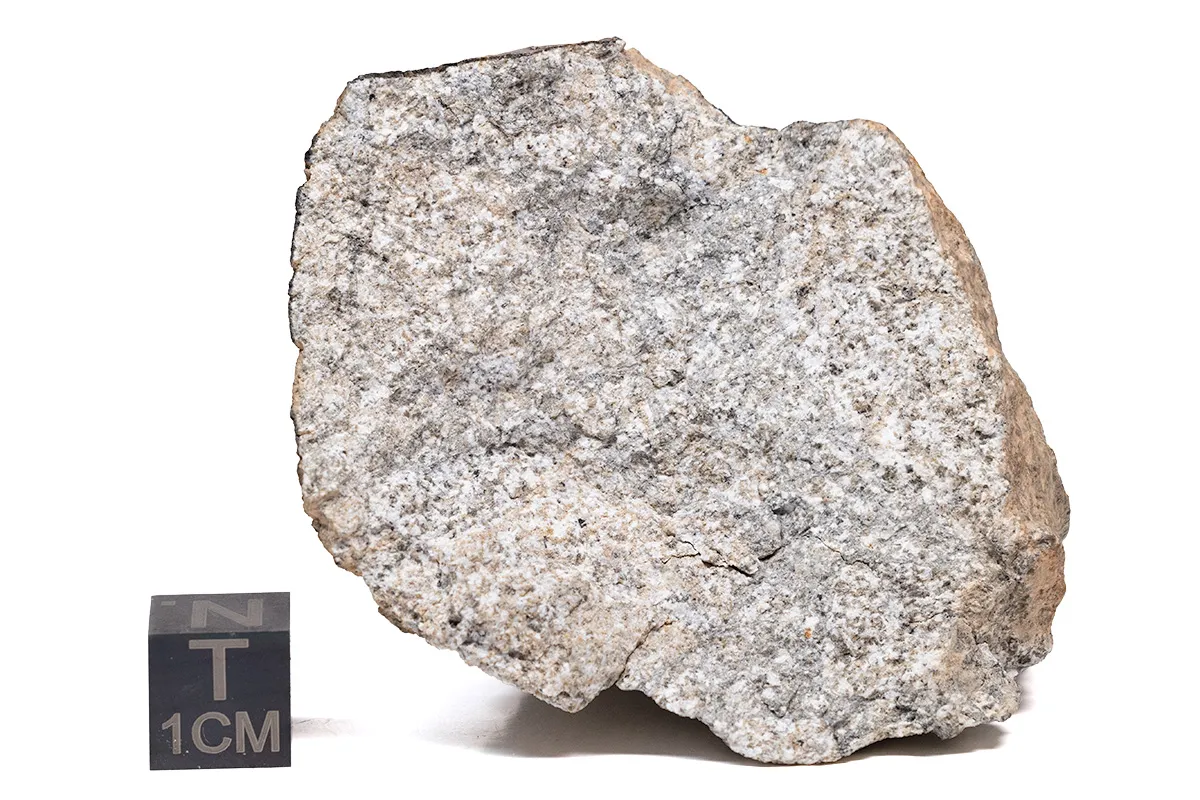Description
Eucrite, unbrecciated
Purchased in 2016, Mauritania
There is a low total known weight of this great eucrite, at 2.91 kilograms, Aerolite holds the majority of the stone.
What is a eucrite? These are meteorites that are thought to have come from asteroid Vesta. They are part of the HED class of meteorites, which includes howardites, eucrites, and diogenites. Eucrites are achondrites, meaning they do not contain chondrules. It’s likely that these meteorites come from planetary bodies that have undergone differentiation. In larger bodies, heat and gravity often cause heavier elements to sink into the body’s deep interior, forming a core, a mantle, and a crust. Achondrites often represent the crust or mantle of such bodies. Scientists believe Vesta has an iron-nickel core, an olivine mantle, and a crust.
Eucrites are also basalt, meaning they are cooled igneous rock, or lava. Vesta’s crust is made up of basaltic material, which was once molten. This material came from Vesta’s mantle, either in progressive eruptions or as an ocean of magma. In fact, images of Vesta reveal that the asteroid has large, exposed areas of this ancient cooled lava. Areas like this are also observed on the Moon, where they are described using the word “mare,” the Latin word for “sea.”
What does the word “eucrite” mean? The name for these meteorites comes from the Greek word “eukritos,” meaning “easily distinguished.” Eucrites are very different from other meteorites in several ways. Inside, they contain large silicate grains, and they are also very light in color and weight. Like terrestrial pumice, eucrites are low in density and contain virtually no iron. All these factors combined make these Vesta lava rocks very difficult to find and recover.




Reviews
There are no reviews yet.